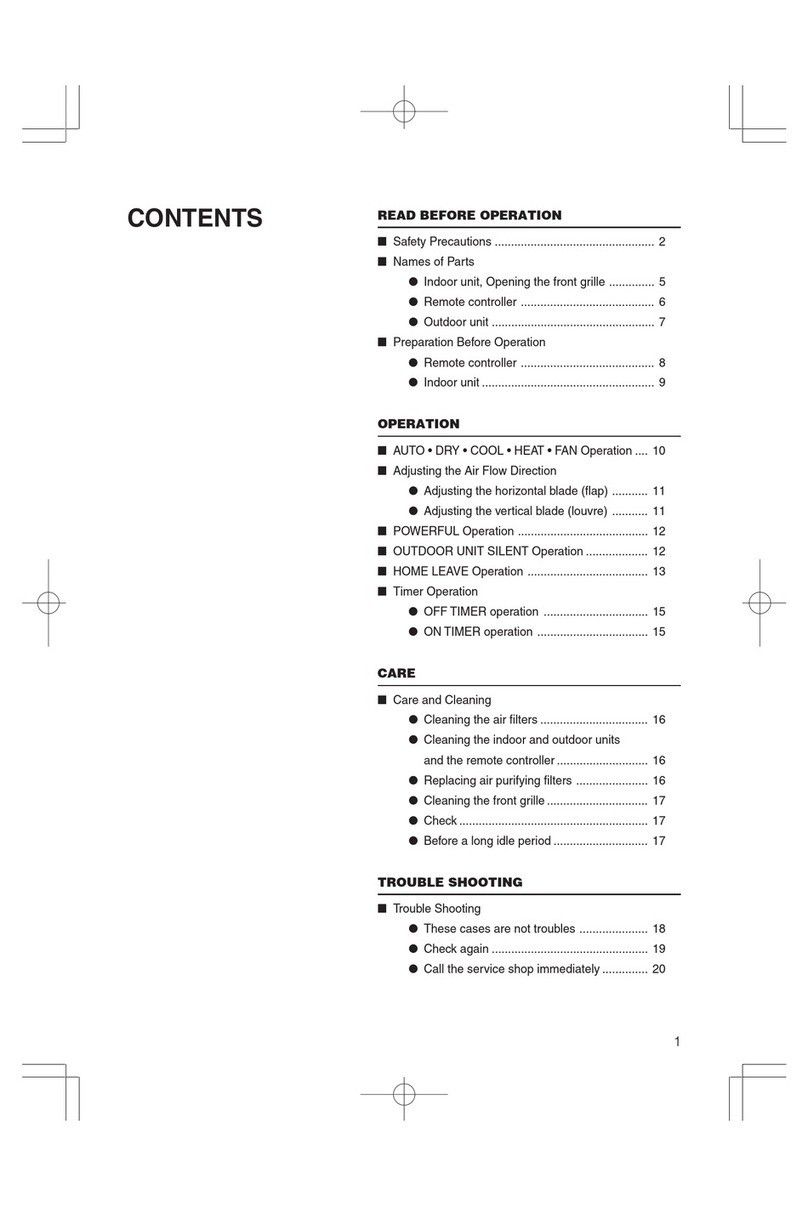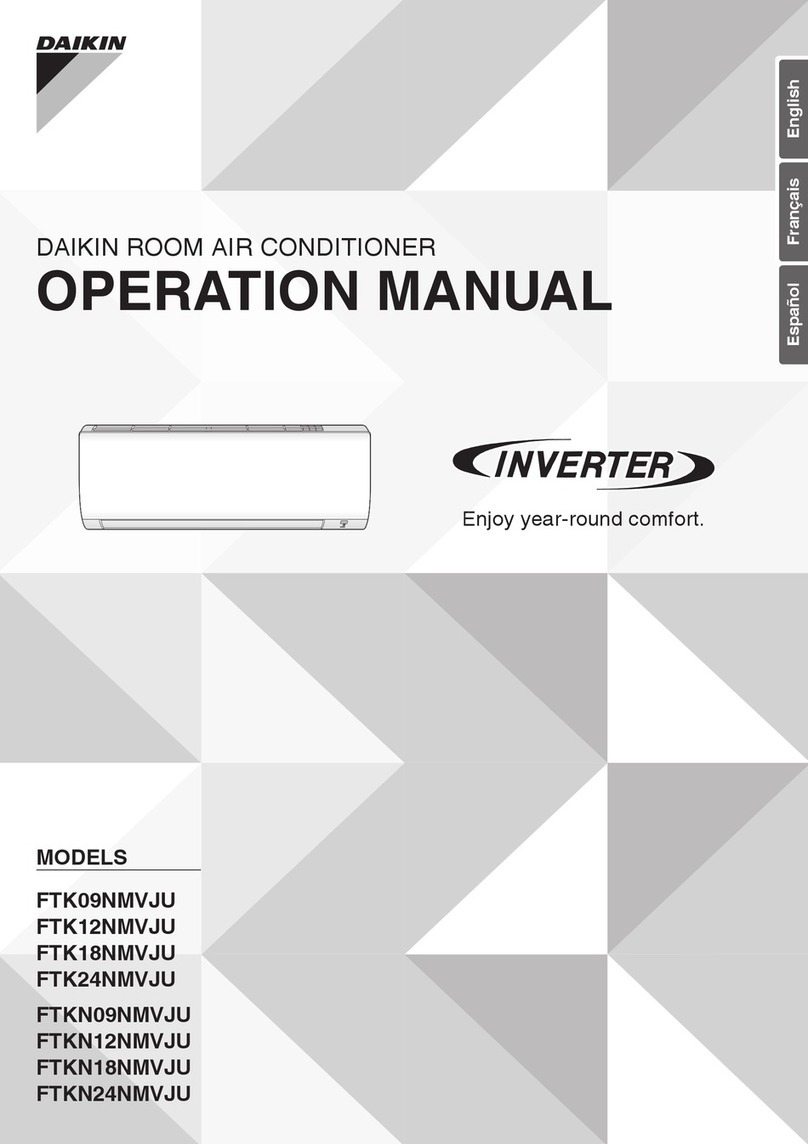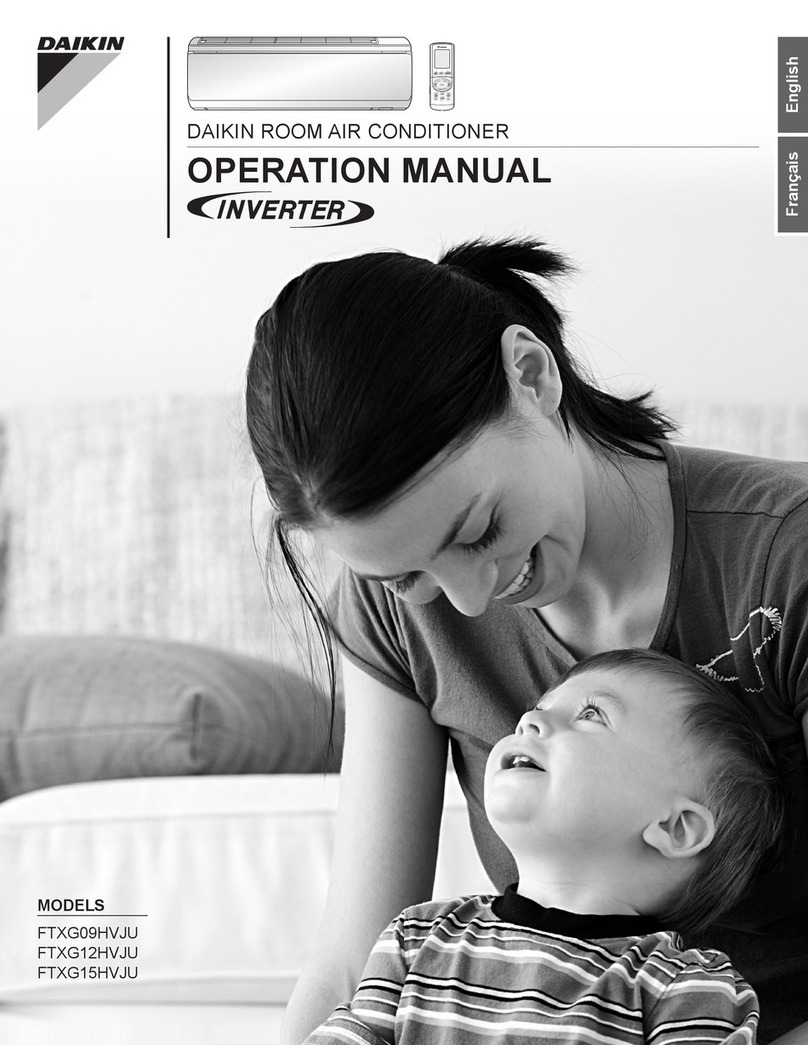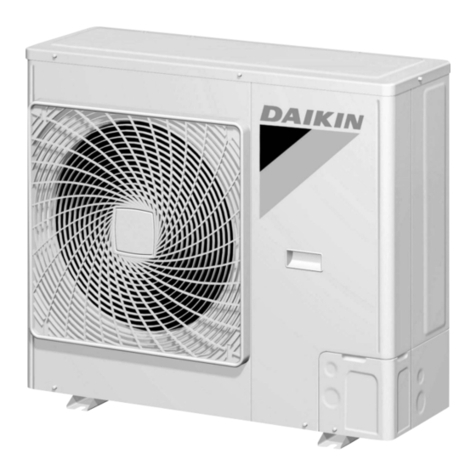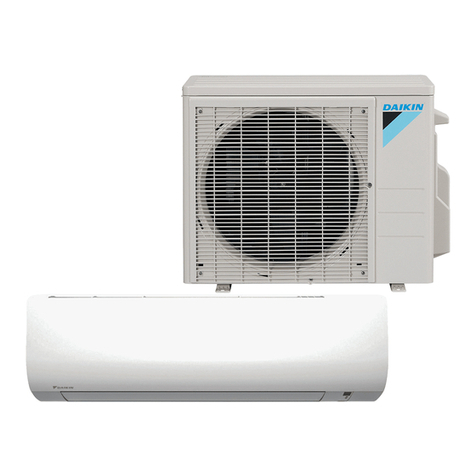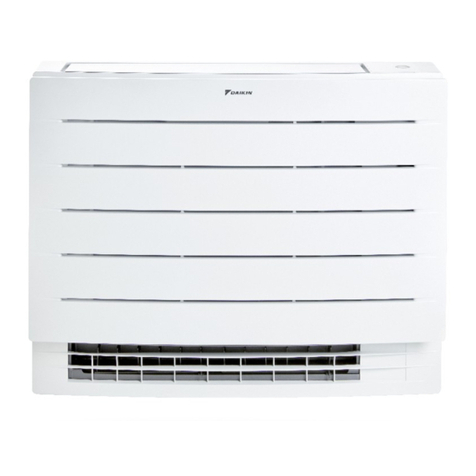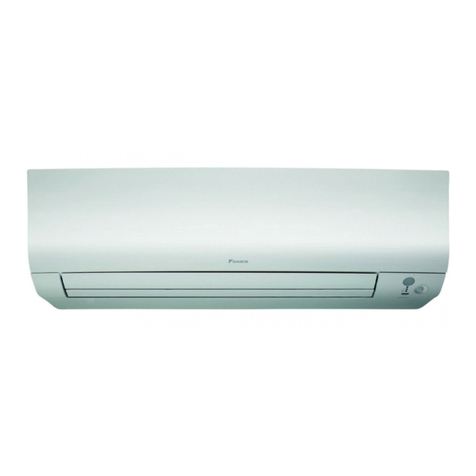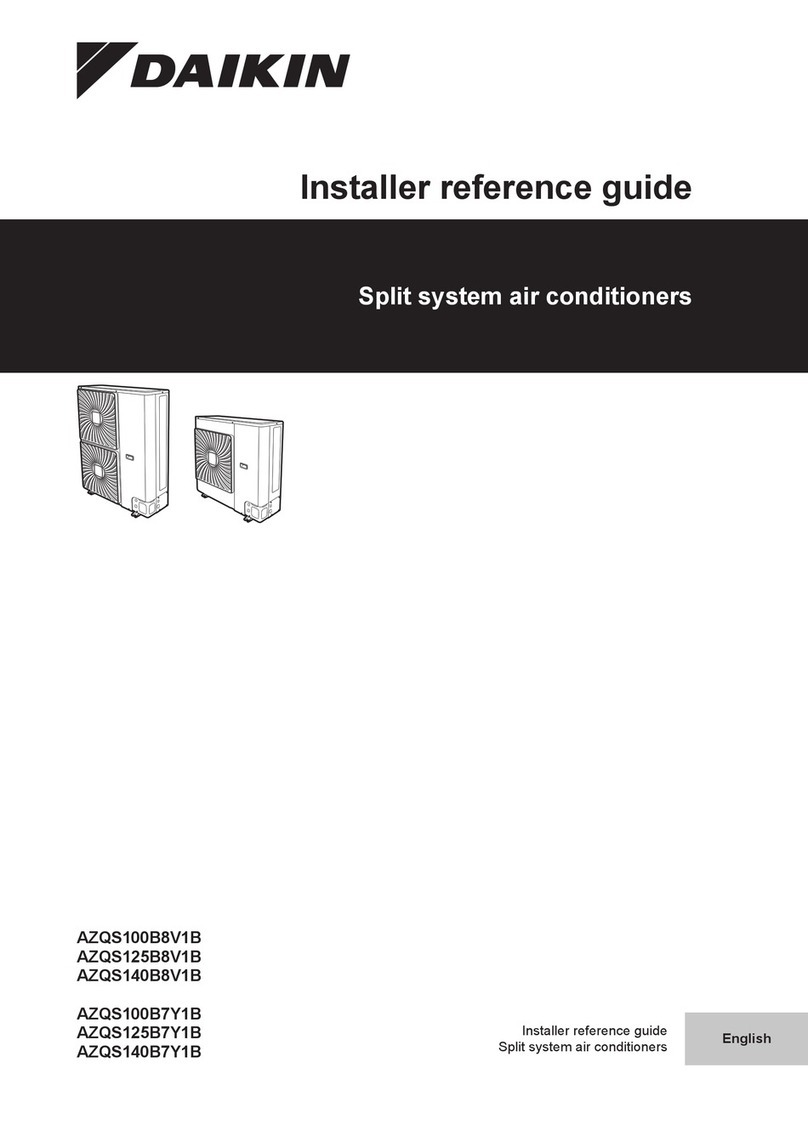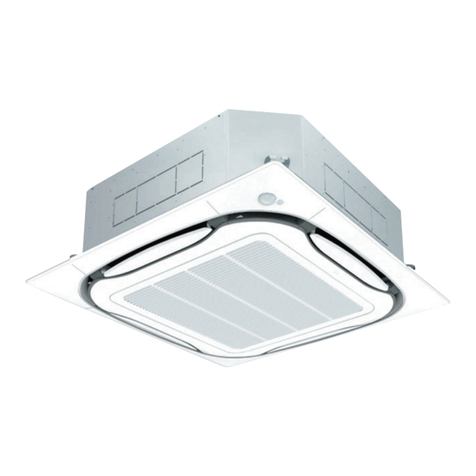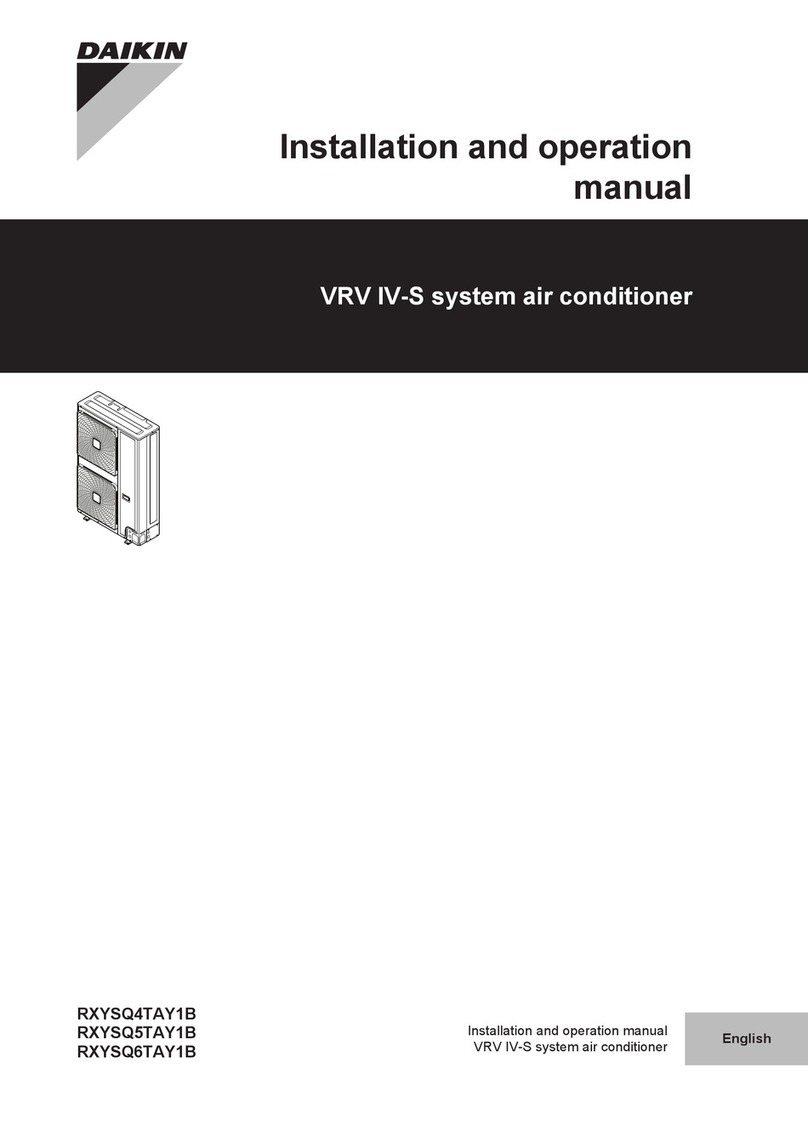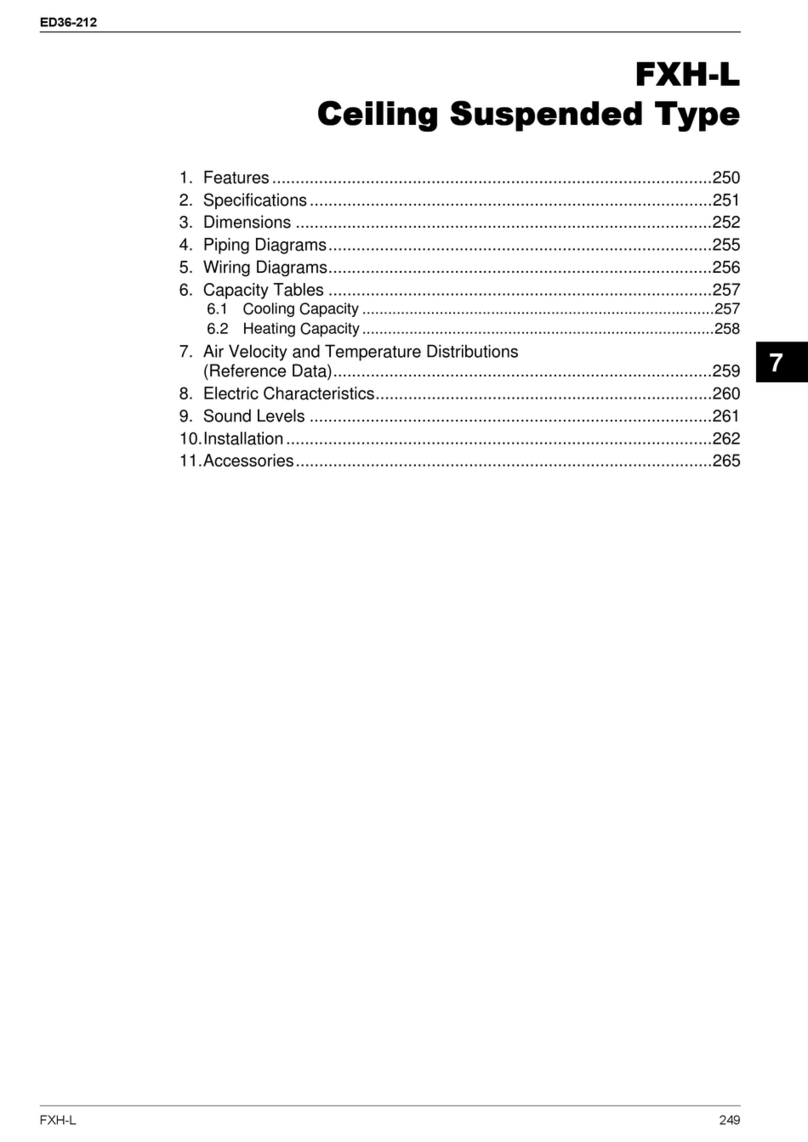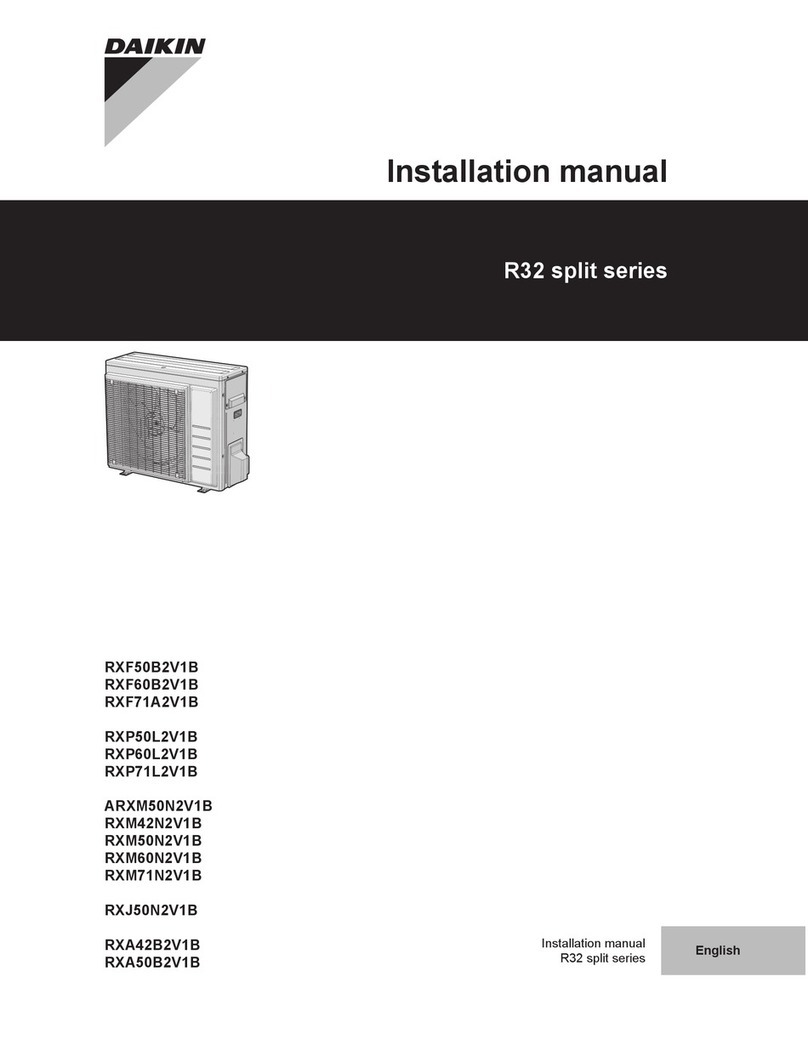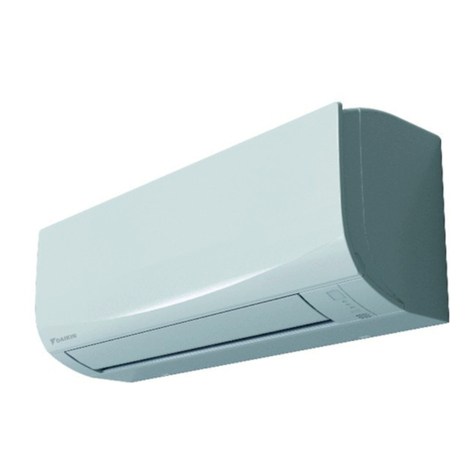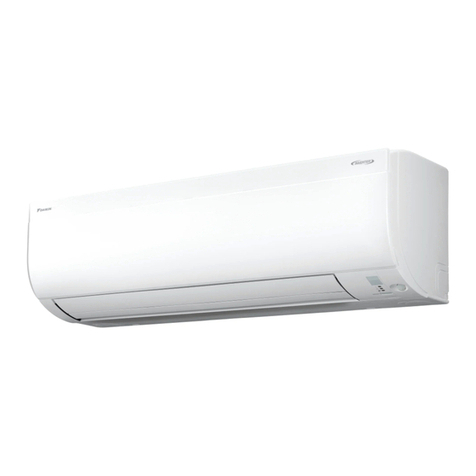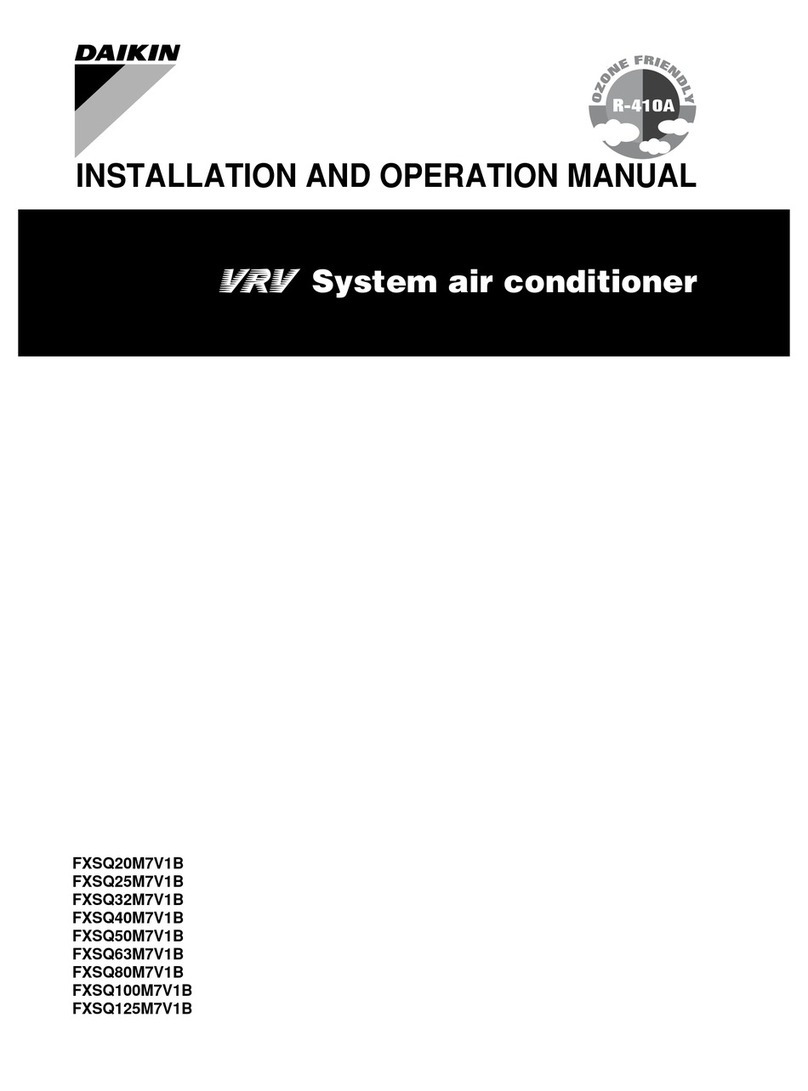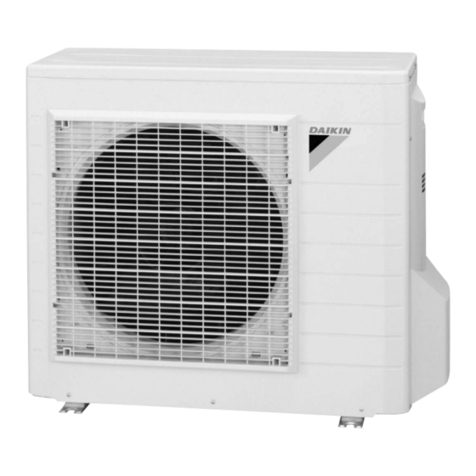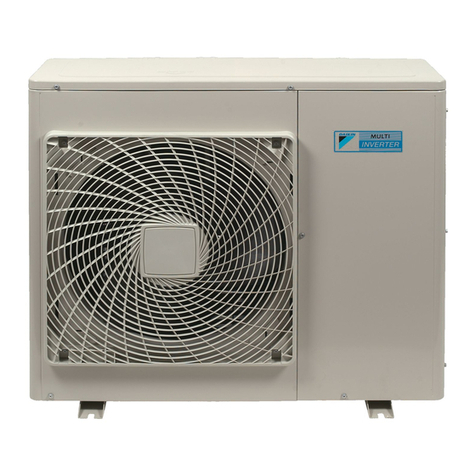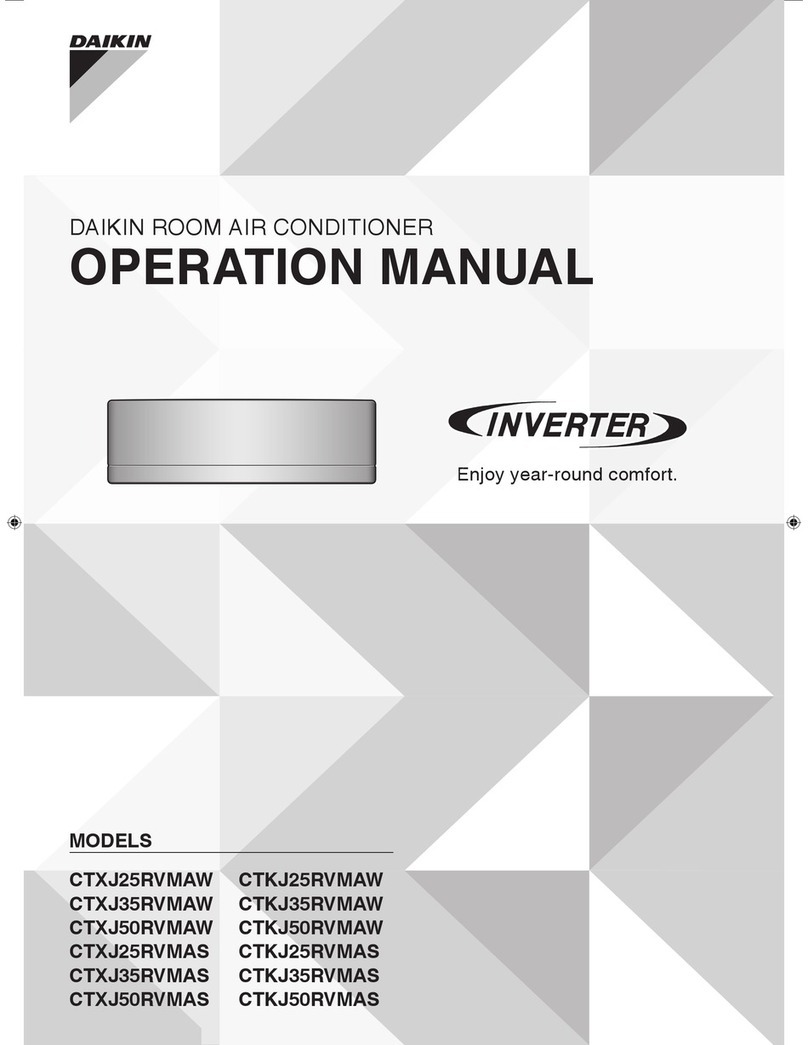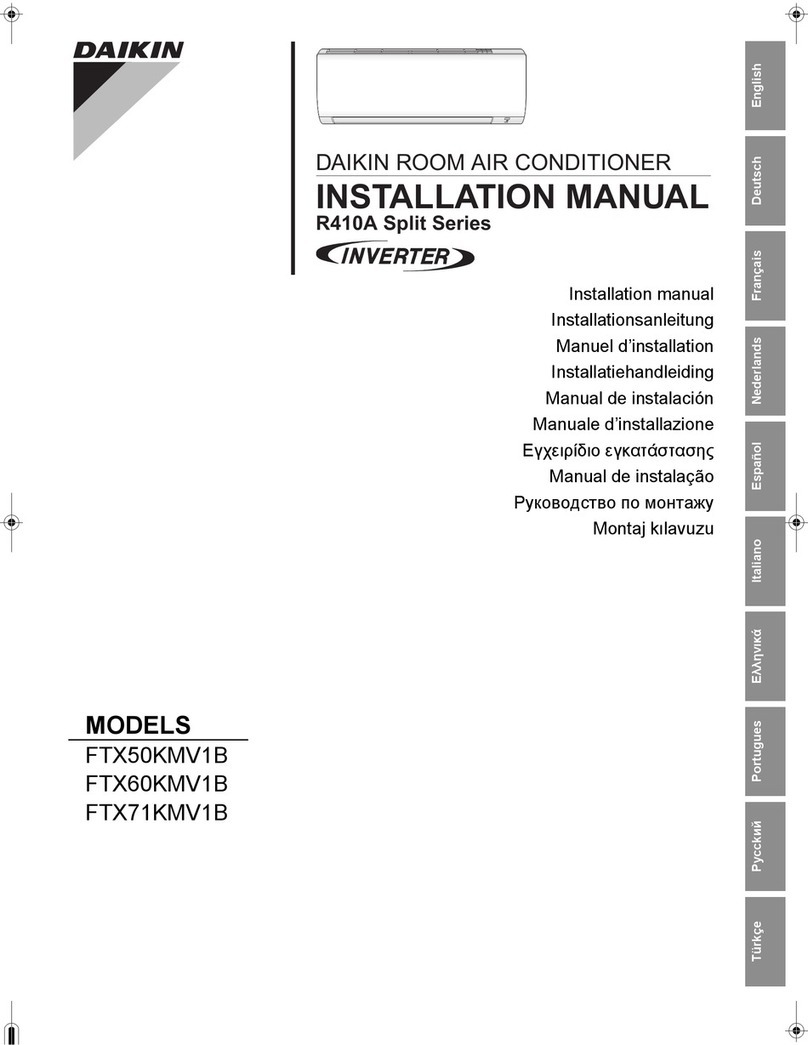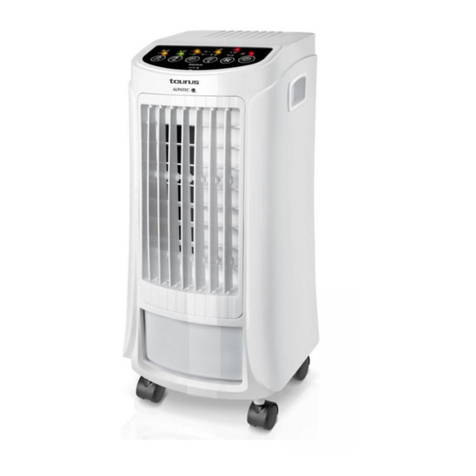
10
UtilizationVoltage-Thevoltageofthelineterminalsoftheequip-
ment at which the equipment must give fully satisfactory perfor-
mance. Once it is established that supply voltage will be main-
tained within the utilization range under all system conditions,
check and calculate if an unbalanced condition exists between
phases. Calculate percent voltage unbalance as follows:
Three Phase Models Only
3) PERCENT VOLTAGE
UNBALANCE
2) MAXIMUM VOLTAGE DEVIATIONS
FROM AVERAGE VOLTAGE
1) AVERAGE VOLTAGE
HOW TO USE THE FORMULA:
EXAMPLE: With voltage of 220, 216, and 213
1) Average Voltage = 220+216+213=649 / 3 = 216
2) Maximum Voltage Deviations from Average Voltage = 220 - 216 = 4
3) Percent Voltage Unbalance = 100 x = = 1.8%
Percent voltage unbalance MUST NOT exceed 2%.
4
216 400
216
= 100 X
AIRFLOWADJUSTMENTS
The drive on the supply fan is typically set in the middle of the
RPM range. The drive motor sheave pitch diameter is field adjust-
ablefortherequiredairflow.Referto“DriveAdjustments”section
below.
Whenthefinaladjustmentsarecomplete,thecurrentdrawofthe
motor should be checked and compared to the full load current
rating of the motor. The amperage must not exceed the service
factor stamped on the motor nameplate. The total airflow must
notbelessthan thatrequiredforoperationof the electricheaters
or the furnace.
Ifaneconomizerisinstalled,checktheunitoperatingbalancewith
theeconomizeratfulloutsideairandatminimumoutsideair. Upon
completion of the air flow balancing, we recommend replacing
the variable pitched motor sheave with a properly-sized fixed
sheave.Amatchingfixedsheavewillprovidelongerbeltandbear-
ing life and vibration free operation. Initially, it is best to have a
variable pitched motor sheave for the purpose of airflow balanc-
ing, but once the balance has been achieved, fixed sheaves main-
tain alignment and minimize vibration more effectively. For direct
drive units, move green wire for fan.
NOTE:NeverrunCFMbelow350CFMperton,evaporatorfreezing
or poor unit performance is possible.
PSC MOTOR
Adjust the CFM for the unit by changing the speed tap of the in-
door blower motor at the EBTDR “com” connection with the one
of the speed taps on “M1” or “M2” (Black-High Speed, Blue-Me-
dium Speed, Red-Low Speed).
EEM MOTOR
Adjust the CFM for the unit by changing the position of the low
voltage leads on the motor terminal block. Green is for Fan Only.
Yellow is for Cooling and Heat Pump Heating. Refer to Appendix A
for blower performance at each speed tap. NOTE: If more than
one lead is energized simultaneously, the motor will run at the
higher speed.
EVAPORATOR FAN ROTATION CHECK (THREE PHASE MODELS ONLY)
Check that fan rotates counter-clockwise when viewed from the
driveside ofunitand in accordancewithrotationarrowshownon
blower housing. If it does not, reverse the two incoming power
cables. In this case, repeat bearing check.
Donotattempttochangeloadsidewiring.Internalwiringassures
all motors and compressors will rotate in correct direction once
evaporator fan motor rotation check has been made.
ELECTRICAL INPUT CHECK
Makepreliminarycheckofevaporatorfanamperedrawandverify
that motor nameplate amps are not exceeded. A final check of
amp draw should be made upon completion of air balancing of
the duct system (see Appendix B).
BELT DRIVE MODELS ONLY
The drive on the supply fan is typically set in the middle of the
RPM range. The drive motor sheave pitch diameter is field adjust-
ablefortherequiredairflow.Referto“MotorSheaveAdjustmens”
section.
Upon completion of the air flow balancing, we recommend re-
placing the variable pitched motor sheave with a properly-sized
fixedsheave.A matching fixedsheavewill providelonger beltand
bearinglifeand vibrationfreeoperation. Initially,itisbest tohave
avariablepitchedmotorsheaveforthepurposeofairflowbalanc-
ing, but once the balance has been achieved, fixed sheaves main-
tain alignment and minimize vibration more effectively. For direct
drive units, move fan speed wire.
BEARING CHECK
Priortoenergizinganyfans,checkandmakesurethatallsetscrews
are tight so that bearings are properly secured to shafts.
For heat pump units, the airflow must be adjusted so that the air
temperaturerisefallswithin the rangesgivenstatedon DataPlate
(see Appendix A - Blower Performance).
SET EVAPORATOR FAN RPM
ActualRPM’smustbesetandverifiedwithatachometerorstrobe
light. Refer to Appendices A and B for basic unit fan RPM. Refer
also to “Airflow” section of this manual. With disconnect switch
open, disconnect thermostat wires from terminals Y and W. This
willpreventheatingandmechanicalcoolingfromcomingon.Place
ajumperwireacrossterminalsRandGatTB1terminalblock.Close
disconnect switch; evaporator fan motor will operate so RPM can
be checked.
TENSION AND ALIGNMENT ADJUSTMENT
Correct belt tension is very important to the life of your belt. Too
loose a belt will shorten its life; too tight, premature motor and
bearing failure will occur. Check you belt drive for adequate “run-
in” belt tension by measuring the force required to deflect the
belt at the midpoint of the span length. Belt tension force can be
measured using a belt tension gauge, available through most belt
drive manufacturers.
